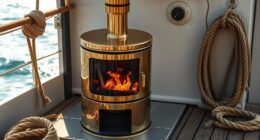I recently put in a new wood-burning stove, but unfortunately, it’s filling my house with smoke. What could be the cause of this troublesome problem?
After careful research, I’ve discovered a few common culprits. Improper installation, poor ventilation, wet or green wood, a damaged or blocked chimney, or improper use of dampers can all contribute to excessive smoke.
Understanding these potential causes will help me address the problem and enjoy the warmth of my wood stove without the unwanted side effects.
Key Takeaways
- Proper insulation and following manufacturer’s instructions during installation can prevent smoke leakage and create a smoky atmosphere.
- Sufficient air intake and chimney height are important for proper ventilation and smoke venting.
- Using seasoned firewood with moisture content around 20% or lower can minimize smoke production and ensure efficient burning.
- Regular chimney inspections and clearing blockages are necessary to maintain a safe and efficient chimney system.
Incorrect Installation
I think my new wood stove is smoking because it was installed incorrectly. Installation errors can lead to various issues, including smoke leakage. One common mistake is inadequate insulation around the stovepipe, which can cause heat to escape and create smoke. Insufficient insulation can also lead to condensation, which can mix with the smoke and create a smoky atmosphere.
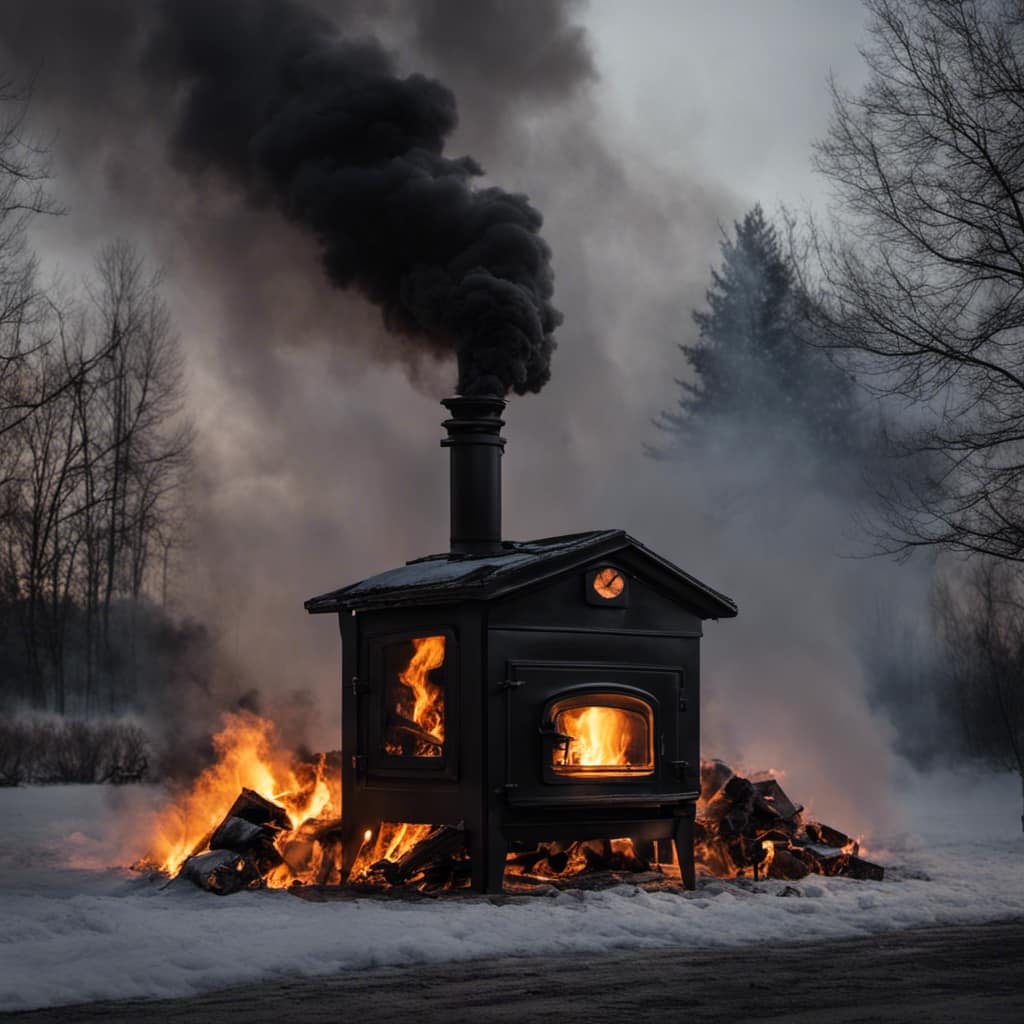
Additionally, if the stovepipe isn’t properly aligned or connected, it can result in smoke escaping into the room instead of being directed outside. These installation errors can be easily avoided by ensuring that the stovepipe is properly insulated and connected, following the manufacturer’s instructions precisely.
Moving on to the next section, poor ventilation can also contribute to smoke production.
Poor Ventilation
The smoke from my wood stove might be caused by poor ventilation. When a wood stove is not properly ventilated, it can lead to a buildup of smoke inside the house. Two common reasons for poor ventilation are insufficient air intake and inadequate chimney height.
| Issue | Explanation | Solution |
|---|---|---|
| Insufficient air intake | If the stove does not have enough air intake, it can result in incomplete combustion, leading to more smoke production. | Ensure that the air vents are fully open and not blocked. Also, check if the stove’s air intake is properly sized for the room it is installed in. |
| Inadequate chimney height | A chimney that is too short can cause poor draft, preventing the smoke from being properly vented outside. | Increase the height of the chimney or add an extension if necessary. This will improve the draft and allow for better smoke expulsion. |
Wet or Green Wood
Using wet or green wood in the stove can lead to poor combustion and increased smoke production. It’s important to use seasoned firewood in order to optimize the performance of your wood stove.
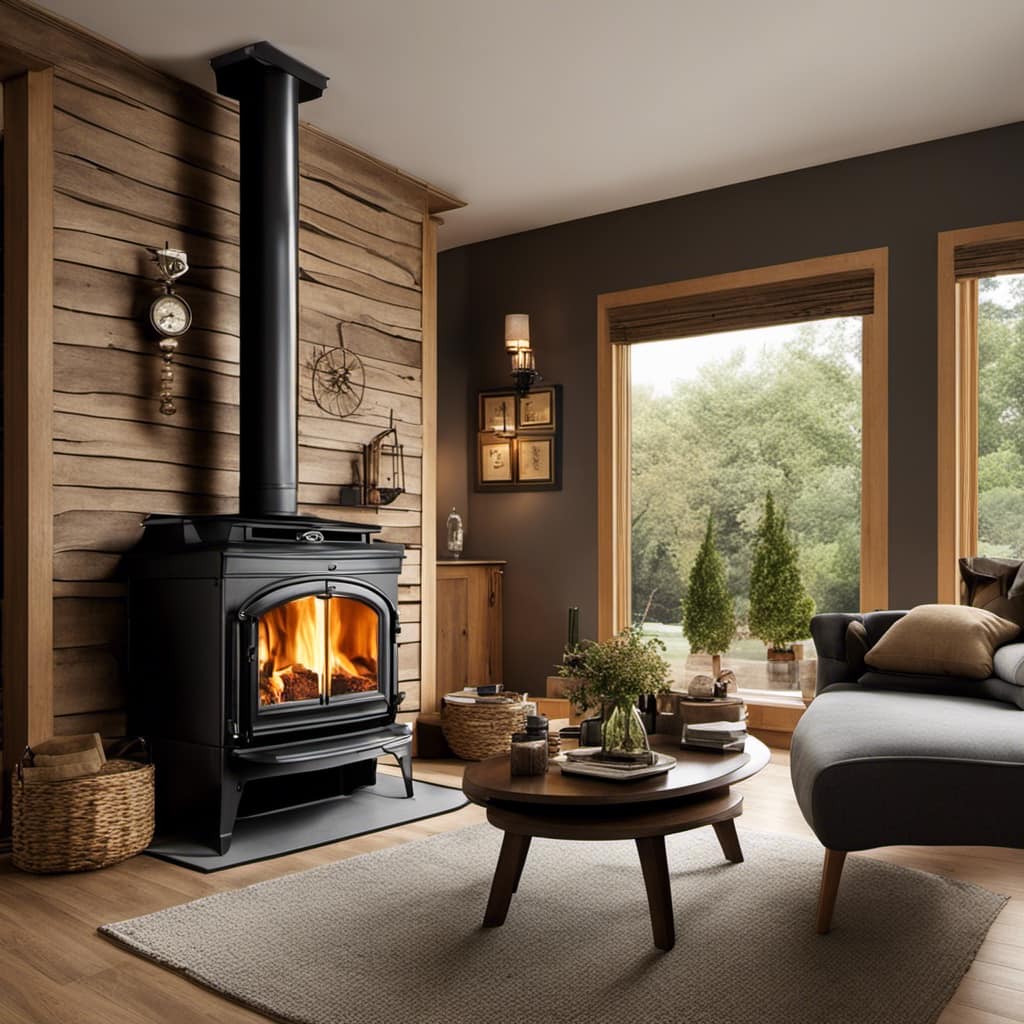
Seasoned firewood has a moisture content of around 20% or lower, which allows for efficient burning and minimal smoke production. Wet or green wood, on the other hand, contains a high moisture content, often exceeding 50%.
When this wood is burned, the excess moisture creates steam and prevents the wood from reaching its optimal combustion temperature. This leads to incomplete burning and the production of more smoke.
To ensure you have seasoned firewood, proper wood storage is crucial. Wood should be stored in a dry, well-ventilated area for at least six months to a year, allowing it to dry properly before use.
Damaged or Blocked Chimney
When it comes to a damaged or blocked chimney, it’s important to address the issue promptly to prevent potential hazards. Neglecting chimney maintenance can lead to serious consequences, including carbon monoxide hazards and increased risk of chimney fires.
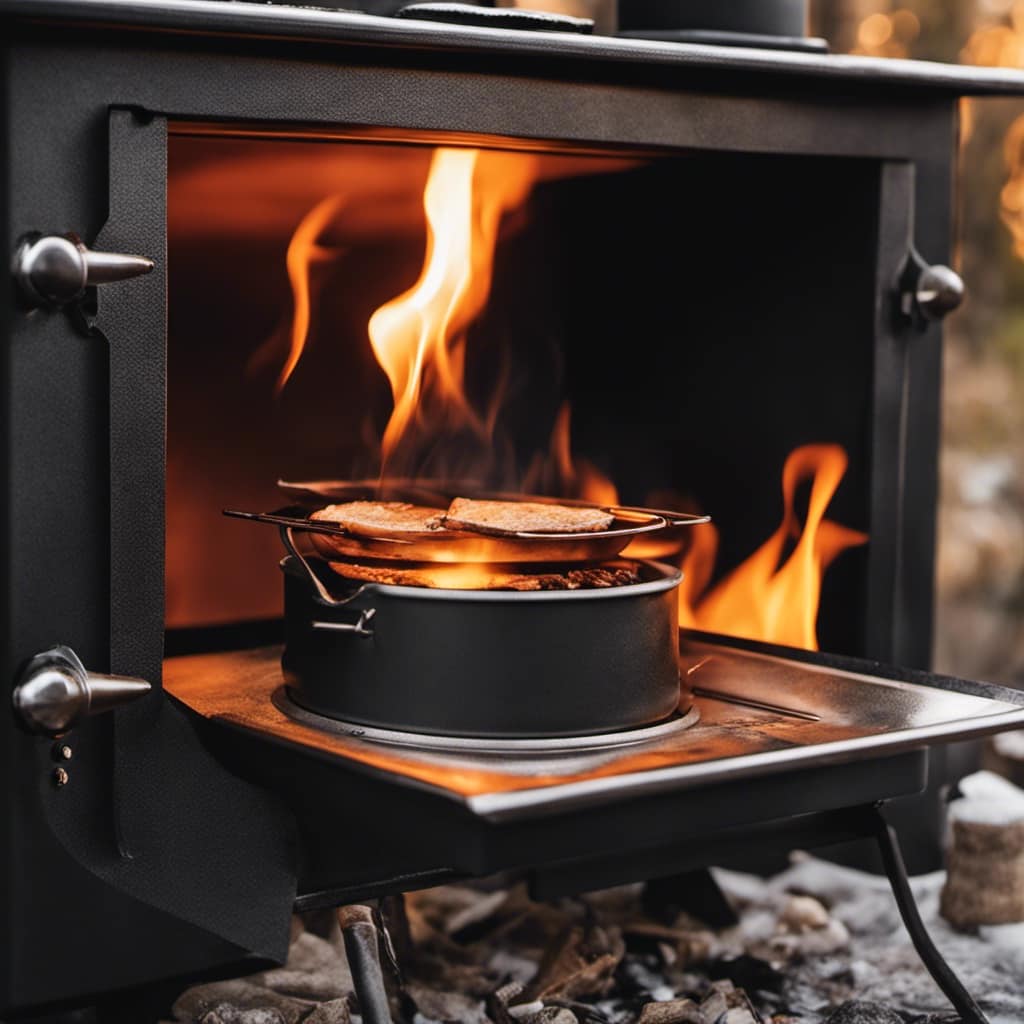
Here are three key points to consider:
-
Regular inspections: Scheduling regular chimney inspections by a qualified professional is crucial to identify any damage or blockages. This will ensure that your chimney is functioning properly and safely.
-
Clearing blockages: Over time, chimneys can become blocked by debris, such as birds’ nests or creosote buildup. These blockages restrict the flow of air and increase the risk of carbon monoxide buildup. Clearing these blockages is essential for maintaining a safe and efficient chimney system.
-
Repairing damaged components: Damaged chimney components, such as cracked flue liners or crumbling mortar, can compromise the integrity of the chimney. It’s important to address these issues promptly to prevent further damage and potential hazards.
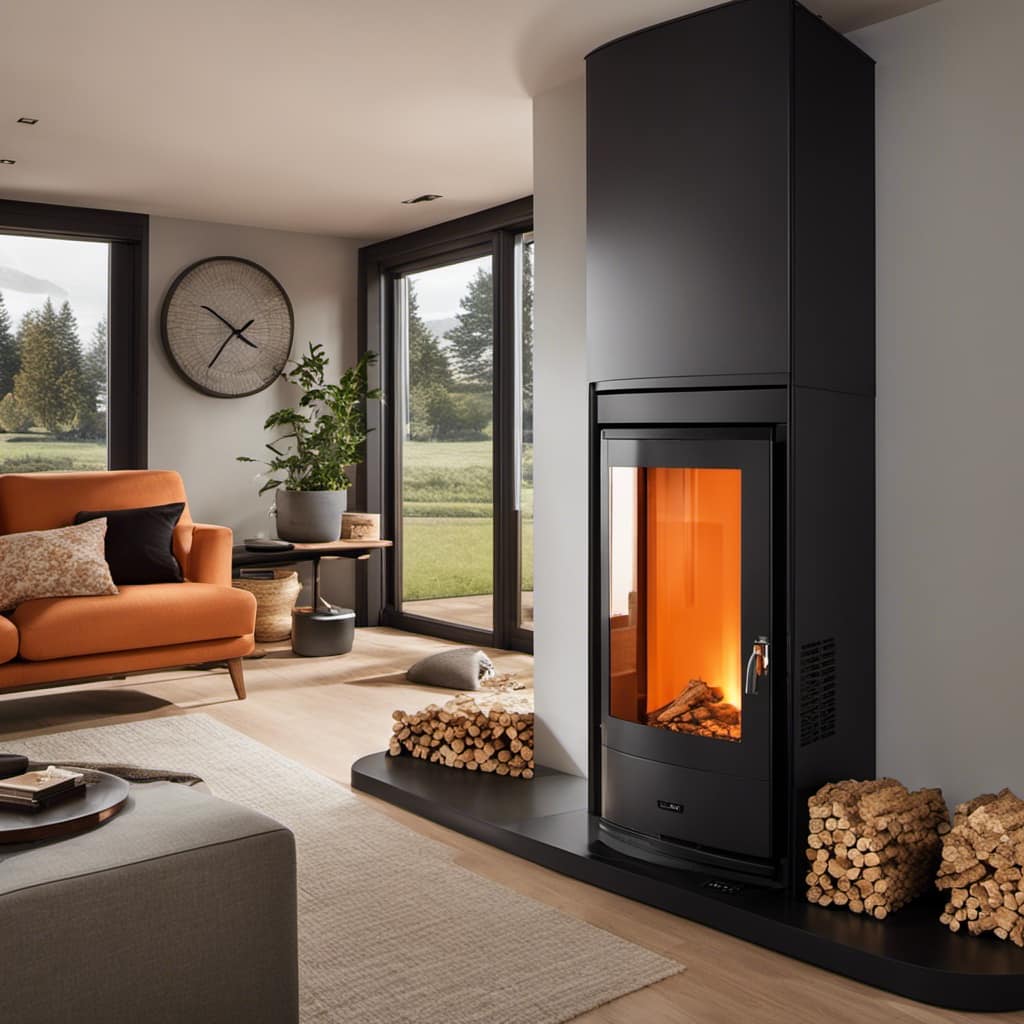
Improper Use of Dampers
I need to be cautious when operating the damper to prevent potential issues with my chimney system. The damper is a crucial component that controls the flow of air in and out of the chimney. It helps regulate the burn rate and temperature of the fire by controlling the amount of oxygen supplied to the flames. When using a wood stove, it is essential to understand how to properly control the damper to ensure efficient and safe operation.
To help you understand the importance of damper control and fuel selection, I have created a table below:
| Damper Position | Effect on Fire | Fuel Selection |
|---|---|---|
| Fully Open | Increases | Fast-burning |
| Partially Open | Moderates | Medium-burning |
| Fully Closed | Decreases | Slow-burning |
Frequently Asked Questions
How Can I Prevent Smoke From Coming Into My Home if the Wood Stove Is Installed Correctly?
To prevent smoke from coming into my home with a correctly installed wood stove, I need to ensure proper ventilation, use dry and seasoned wood, and maintain a hot fire with adequate airflow.
What Are Some Signs of Poor Ventilation That May Cause Smoke Issues With a Wood Stove?
Poor ventilation can cause smoke issues with a wood stove. Signs include smoke leaking into the room, black soot on walls, and difficulty starting or maintaining a fire. Troubleshooting these issues is essential for a properly functioning wood stove.
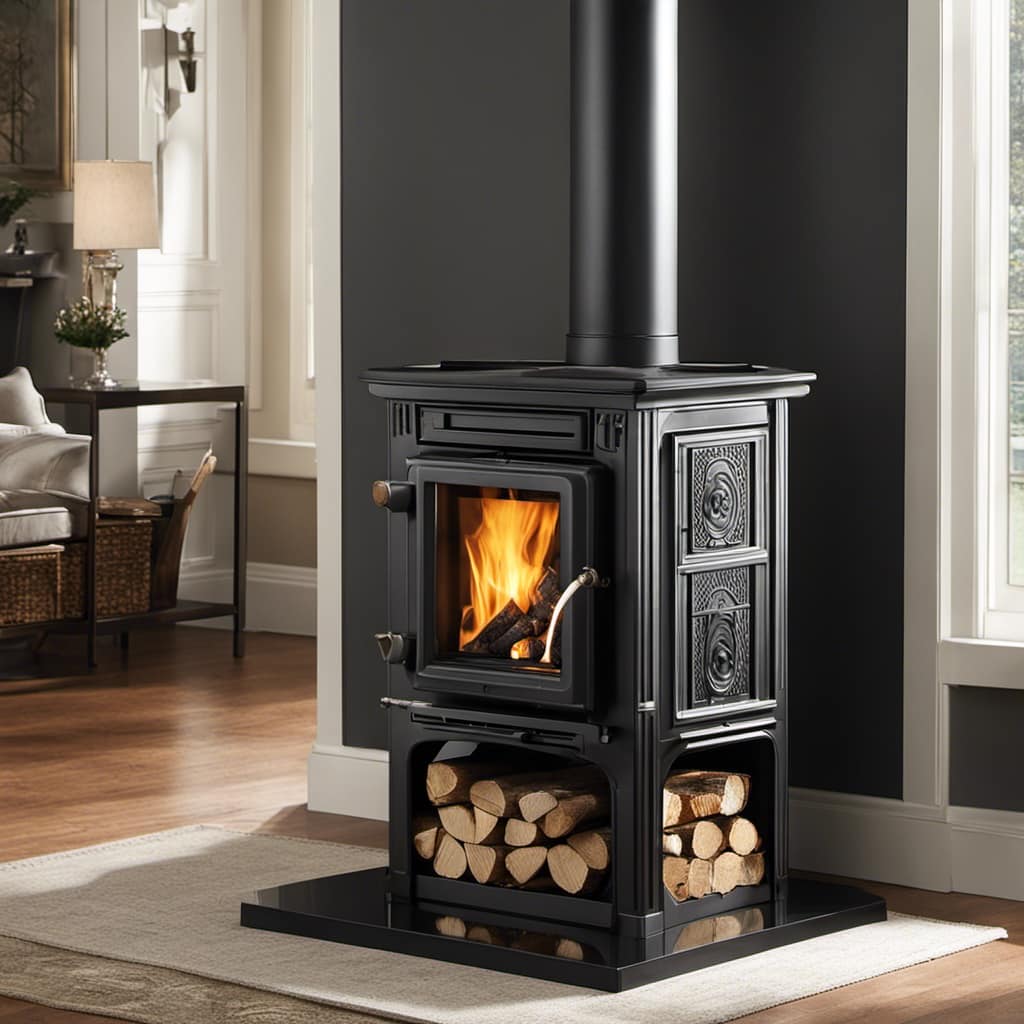
Can Smoking Issues Occur Even if I Am Burning Dry and Seasoned Wood in My Wood Stove?
Even with dry and seasoned wood, smoking issues can still occur in a wood stove. Proper wood storage, such as keeping wood off the ground and protected from moisture, is essential for optimal performance. Troubleshoot draft issues by checking flue and chimney for blockages.
Are There Any Other Reasons Besides a Damaged or Blocked Chimney That Can Cause Smoke Problems With a Wood Stove?
Other causes of smoke problems with a wood stove can include issues with the stove itself, such as a faulty damper or poor air intake. To troubleshoot smoke issues, check for these potential problems and make necessary adjustments.
What Are Some Common Mistakes People Make When Using Dampers With Their Wood Stove That Can Result in Smoke Issues?
Common damper mistakes can cause smoke issues with a wood stove. One common mistake is closing the damper too soon, preventing proper airflow. Troubleshooting smoke problems involves checking for closed or obstructed dampers.
Conclusion
In conclusion, a smoking wood stove can be attributed to various factors such as:
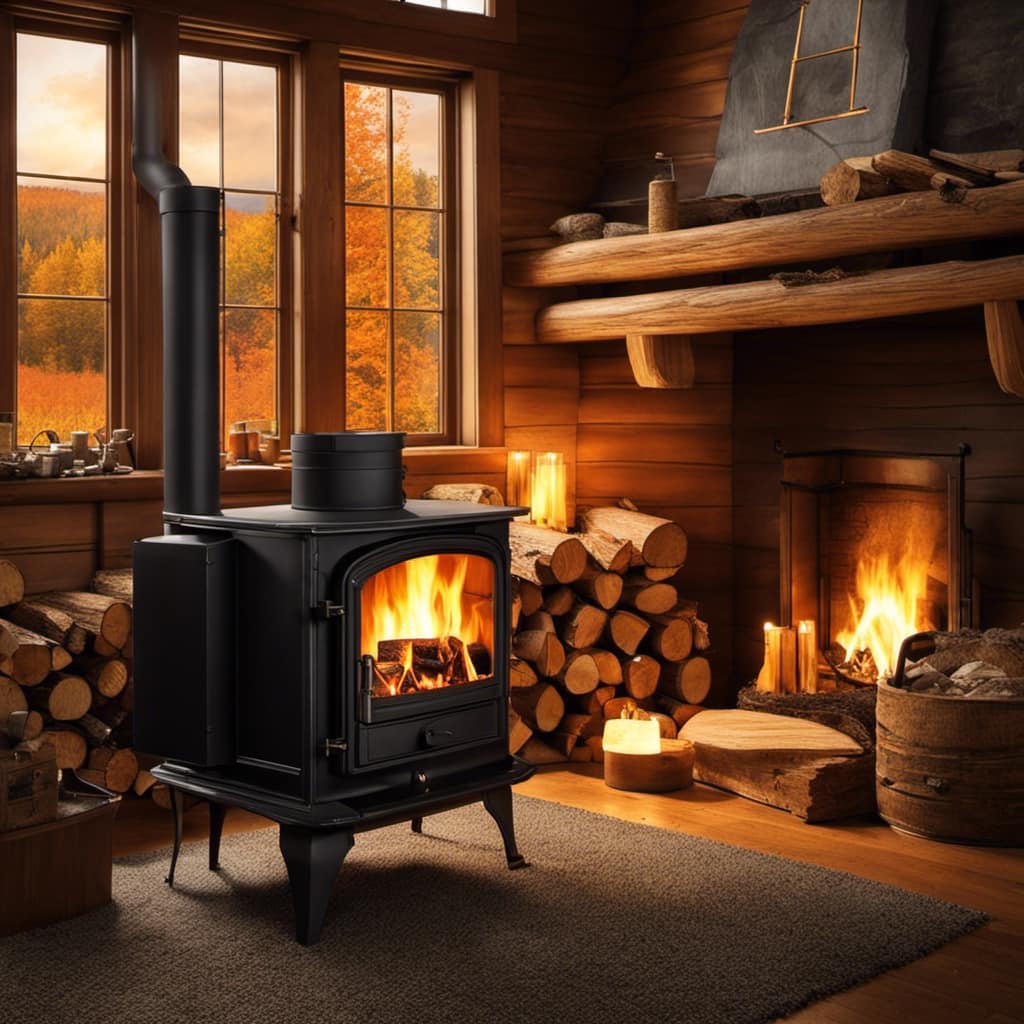
- Incorrect installation
- Poor ventilation
- Wet or green wood
- Damaged or blocked chimney
- Improper use of dampers
Like the smoke rising from a misused fire, these issues can hinder the efficiency and performance of your wood stove.
It’s important to address these concerns promptly to ensure a safe and enjoyable wood-burning experience.
Remember, a well-maintained and properly operated wood stove can bring warmth and comfort to your home, while minimizing smoke and environmental impact.
Growing up surrounded by the vast beauty of nature, Sierra was always drawn to the call of the wild. While others sought the comfort of the familiar, she ventured out, embracing the unpredictable and finding stories in the heartbeat of nature.
At the epicenter of every remarkable venture lies a dynamic team—a fusion of diverse talents, visions, and passions. The essence of Best Small Wood Stoves is crafted and refined by such a trio: Sierra, Logan, and Terra. Their collective expertise has transformed the platform into a leading authority on small wood stoves, radiating warmth and knowledge in equal measure.










